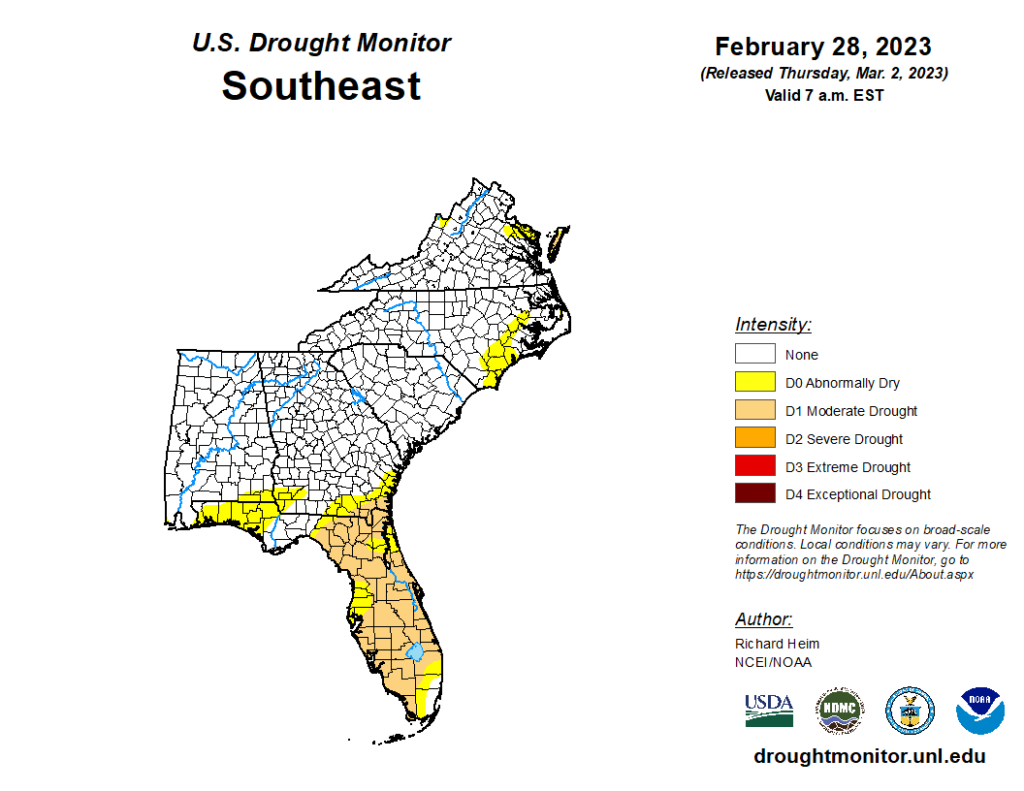The U.S. Department of Agriculture National Agricultural Statistics Service released crop updates for February for states in the Southeast.

ALABAMA: February temperatures ranged from 3.7 degrees Fahrenheit (F) to 9.9 degrees F warmer than normal depending on the location. Total rainfall for the month ranged from 1.3 inches in Dale County to 9.2 inches in Marshall County. Most of the state received significant rain amounts in February, with only the southeastern region of the state not receiving much precipitation.
According to the U.S. Drought Monitor, 0.5% of Alabama had abnormally dry conditions by month’s end, compared to 3% at the beginning of the month. Despite the warmer temperatures, reporters in some areas noted fruit, early planted winter small grain crops, and grazing crops in poor condition due to deep freezes in December and January. Crops planted later were noted to have bounced back well from the freeze.
FLORIDA: February temperatures ranged from 4.3 degrees F to 9.1 degrees F warmer than normal depending on location. Total rainfall for the month ranged from no rain in Collier County to 6.5 inches in Broward County. According to the U.S. Drought Monitor, 80% of Florida had abnormally dry conditions by month’s end, compared to 72% at the beginning of the month. Most of Florida did not receive much precipitation in February, as only the southeastern and north-central regions of the state received a significant amount.
The dry weather helped sugarcane harvest progress rapidly. Citrus grove activities throughout the month included mowing, fertilizing, spraying pesticides, removal of dead trees and general grove maintenance. Fruits and vegetables that were planted and harvested during February include green beans, yellow squash, potatoes, strawberries, zucchini, sweet corn, pepper, and avocadoes.
GEORGIA: February temperatures ranged from 6.2 degrees F to 8.2 degrees F warmer than historical averages depending on location. Total rainfall for the month ranged from 1.1 inches in Muscogee County to 7.6 inches in Lowndes County.
According to the U.S. Drought Monitor, 10% of the state had abnormally dry conditions and 3% had moderate drought conditions by month’s end, compared to 21% abnormally dry and 9% moderate drought at the beginning of the month. Georgia experienced unseasonably warm temperatures for February, which impacted many areas of agriculture across the state. Abundant rainfall in some areas delayed farmers from prepping fields for spring planting, although many areas reported that field work had begun.
The Vidalia onion crop was reported to be progressing well, however, yields are anticipated to be down this year due to the freeze event at the end of December. Many farmers are wary of a potential late season freeze after the warm weather of February.









